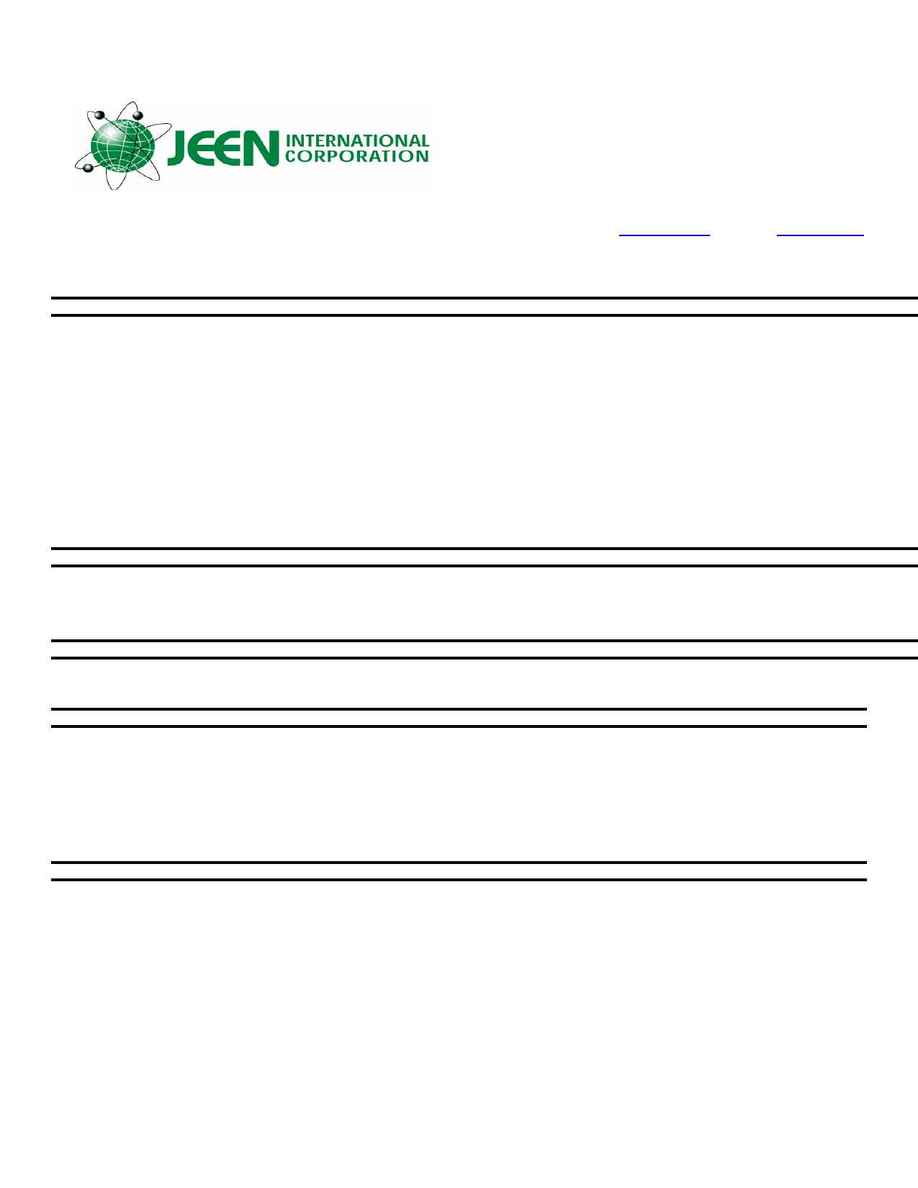
SECTION 5 - FIRE FIGHTING MEASURES
FLAMMABLE PROPERTIES
Flammability Classification
Slightly Combustible! OSHA/NFPA Class-IIIB Combustible Liquid.
Flash Point/Method
AP 365°F (185°C) by ASTM D-92
Flammable Limits%
LEL:
AP 1.0 UEL: AP 7.0 (At or approaching the Flash Point)
Auto-Ignition Temperature
AP 680°F (360°C) (Estimated)
Hazardous
Burning or excessive heating may produce smoke, Carbon Monoxide, Carbon Combustion Products, Dioxide, and possible other harmful gases/vapors
Special Properties:
When heated above its flash point temperature, this material will release flammable vapors which, if exposed to an ignition source, can burn in the open or be
explosive in confined spaces. Mists or sprays may be flammable at temperatures below the flash poi
Page No. of 1 of 4 - MSDS - Aloe Vera Oil Extract
EXTINGUISHING MEDIA:
SMALL FIRE: Use dry chemicals, Carbon Dioxide, (CO2), foam, water fog, or inert gas (Halon or Nitrogen). LARGE FIRE: Use water fog, water spray, or foam. Foam and water are
effective but may cause frothing. NEVER use a water jet because it may spread the fire to a lager area.
FIRE FIGHTING
For fires involving this material, do not enter any enclosed or confined fire space without proper protective clothing and respiratory protective equipment,
INSTRUCTIONS:
This may include supplied air or a ANIOSH/MSHA-approved self contained breathing apparatus (SCBA) to protect against the hazardous effects of combustion
products and/or Oxygen deficiencies. Cool tanks and containers exposed to fire and water. Burning liquid will float on water. Notify the appropriate authorities
if liquid(s) enter sewers or waterways.
SECTION 6 - ACCIDENTAL RELEASE MEASURES
Small Spills: Contain spill and prevent it from entering all bodies of water, if possible. Safely stop flow of spill. Evacuate non-essential personnel from immediate area due to
slipping hazard. Maximize product recovery for reuse or recycling. Absorb spill with inert material (e.g., dry sand, earth or other non-combustible absorbents) and place in a
chemical waste container for later disposal. In urban areas, cleanup spill as soon as possible; in natural environments, cleanup on advice from ecologists. This material will
float on water. Absorbent pads and similar materials can be used. The spilled material and any soil or water which it has contacted may be hazardous to animal and / or
aquatic life. Comply with all laws and regulations.
SECTION 6 - ACCIDENTAL RELEASE MEASURES Continued..........
Large Spills: Secure the area and control access. Verify that responders are properly HAZWOPER-trained and wearing appropriate protective clothing/equipment, including
organicrespirators or supplied air. Dike far ahead of a liquid spill to ensure complete collection. Pick up free liquid for recycle and/or disposal if it can be accomplished
safely.
All spills into U.S. navigable waterways need to be reported to the National Response Center (800-424-8802).
SECTION
7-
HANDLING
AND
STORAGE
Handling
Remove spillage immediately from hard, smooth walking areas. Avoid oxidizing agents. Avoid contact with eyes, skin and clothing. Avoid
prolonged or repeated breading of mist. Use only with adequate ventilation/personal protection. Wash thoroughly after handling. Prevent
contact with food, chewing, or smoking materials. Do not take internally.
Storage
Keep container tightly closed. Keep it in a dry , cool, well-ventilated place. Combustible materials should be stored away from extreme
heat, radiation sources, and strong oxidizing agents. DO NOT puncture, incinerate, or store containers at temperatures above 120°F
(49°C) or in direct sunlight.
Store and handle so as to prevent contamination from any source , especially when this material is to be used in applications covered be
Food and Drug Administration regulations at 21 CFR 178.3820(a) and 172.878( C ). To avoid, product degradation, water contamination
should be avoided and minimum feasible handling temperatures should be maintained. Periods of exposure to high temperatures (GT
200°F) Should be minimized. Product degradation might increase health hazard risks.
SECTION 8 - EXPOSURE CONTROLS AND PERSONAL PROTECTION
ENGINEERING CONTROLS:
Provide exhaust ventilation or other engineering controls to keep the airborne concentrations of mists and/or vapors below the pertinent
exposure limits (see below). Ensure that an eyewash station and safety shower are near to the work-station and safety shower are near to
the work-station location.
PERSONAL PROTECTIVE EQUIPMENT
Eye Protection
Safety glasses should be adequate protection under most conditions of use. Wear goggles and/or face shield if splashing or spraying is
likely,
specially if material is heated above 125 (or 51°C). Have suitable eye wash water available.
Skin Protection:
Hands:
No special skin protection other than good personal hygiene practice is recommended under anticipated conditions of use. Wash hands
with plenty of mild soap and water before eating, drinking, smoking, using toilet facilities, or leaving work.
Body:
If conditions (splashing or spraying) present potential exposure, clean and impervious protective clothing (Neoprene or Tyvek) such as
long
sleeves, apron, or lab coat should be worn. When handling heated material, also be sure to wear heat-resistant gloves and boots. If
significant
contact occurs, promptly take as shower. Remove oil-soaked clothing as soon as possible and launder thoroughly before use.
Respiratory Protection:
None is needed under anticipated use conditions with adequate ventilation. If exposure approaches or exceeds the occupational exposure
limits
shown below, wear proper NIOSH/MSHA APPROVED vapor control respiratory equipment.
24 Madison Road, Fairfield, New Jersey 07004, USA
Tel: 800-771-JEEN (5336), Tel: 973-439-1401, Fax: 973-439-1402,
email:
info@jeen.com
, Website:
www.jeen.com
